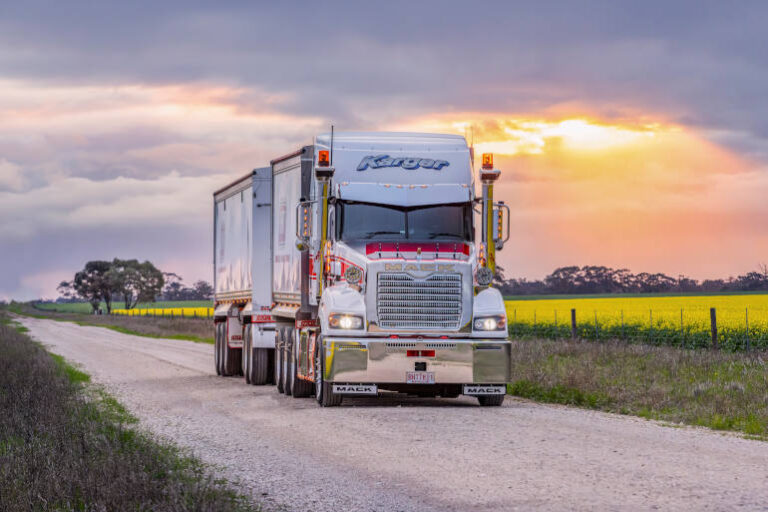As Australia heads to the polls in 2025, Heavy Vehicle Industry Australia (HVIA) has released a clear and practical set of election priorities that call on the next Federal Government to strengthen manufacturing, improve freight productivity, and support the heavy vehicle sector’s transition to net zero emissions. Speaking exclusively to Fleet News Group at the Smart Energy Expo in Sydney, HVIA CEO Todd Hacking outlined the association’s five key asks for government, reinforcing their position as both realistic and ambitious.
“Support for local manufacturing, Net Zero, future workforce productivity, vehicles and road infrastructure,” Hacking said. “That’s what this election platform is all about.”
1. Back Australian manufacturing
HVIA’s first recommendation is to assist local manufacturers of trucks and trailers. Australia has a long tradition of producing world-class heavy vehicles, but global competition and rising costs are putting pressure on many of the mostly family-run businesses in the sector.
To help, HVIA is calling on government to ensure programs like the National Reconstruction Fund and the Future Made in Australia initiative prioritise industries like truck and trailer manufacturing. Ensuring affordable and reliable energy is another key enabler, along with supporting local supply chains and overhauling payroll tax to remove apprenticeship wages from the calculation — an issue Hacking raised directly.
“We want to remove it [apprenticeship wages] from payroll tax calculations,” he said. “That’s supporting the uptake of apprentices.”
2. Help the sector deliver on Net Zero
HVIA supports the transition to Low and Zero Emission Heavy Vehicles (LZEHVs) but has warned that without coordinated national action, adoption will stall. While government investment — such as the $50 million for low carbon liquid fuel research through ARENA — is welcome, HVIA says much more is needed.
“We’re seeing action, but it’s disjointed. ARENA reached out to me to connect with industry because they don’t know where to start,” Hacking said.
HVIA wants the next government to publish a heavy vehicle-specific net zero roadmap and fund infrastructure like battery charging and hydrogen refuelling stations. The plan should also support renewable diesel, incentivise LZEHV purchases, and ensure the energy grid can meet future demand with clean sources.
The lack of coordination between Federal and State Governments is another sticking point. As Hacking explained, “The biggest challenge I see is the fact that the state governments and the Feds aren’t on the same page. It’s all about, ‘What am I going to lose?’ as opposed to what’s potentially good for the country.”
3. Secure the future heavy vehicle workforce
The third priority centres on solving the growing skills crisis. HVIA represents members engaged in over 20 distinct trades, but the current system is falling short in both attracting and training new workers.
Hacking is pushing for free TAFE placements in trades listed on the Core Skills Occupation List (CSOL), more funding for RTOs, and a public awareness campaign to make trades attractive to school leavers.
“There’s a disconnect between the trade pathway and higher education,” he said. “We need to try and make it sexy, get more people interested.”
He also described how outdated training models — like the one-day-a-week VET system — don’t reflect how work is done in real-world workshops. “You can’t just stop building a truck and wait for the student to come back next Friday.”
4. Improve freight productivity
The fourth plank of HVIA’s platform is a call to remove the barriers limiting the productivity of Australia’s freight network. While the need for greater efficiency is clear — with road freight projected to grow by 77% by 2050 — productivity in the sector has stagnated since the 1990s.
HVIA wants harmonised regulation across states, wider access to routes for high-productivity vehicles like B-doubles and road trains, and more Performance-Based Standards (PBS) vehicles moved into the general fleet.
Data is a big part of the solution. “We have no idea who’s going where,” Hacking said. “You can’t fix what you don’t know.”
He pointed to the opportunity to reduce empty return trips — a simple but high-impact efficiency gain that requires national investment in data systems and freight coordination platforms.
5. Optimise road infrastructure for the long term
Finally, HVIA says infrastructure decisions must be driven by long-term needs rather than short-term budgets. Australia’s roads and bridges, many built more than 50 years ago, are struggling to keep up with freight demands — often forcing detours that waste fuel, time, and money.
“I hear stories of operators that have to go five hours out of their way because of one piece of infrastructure,” Hacking said. “No one even plots this stuff.”
To address this, HVIA is urging a risk-based approach to asset management, better protection of future freight corridors, and an infrastructure plan aligned with the Net Zero Roadmap that includes fuelling and recharging needs for the road freight industry.
As Hacking pointed out, the heavy vehicle sector supports over 70,000 manufacturing jobs and underpins $250 billion of freight transport each year — making up more than 8.6% of Australia’s GDP. HVIA is not asking for handouts, but for policy alignment that will allow its members to keep innovating and investing.
“There’s huge potential here,” Hacking said. “We just need the right framework from government to unlock it.”
HVIA’s 2025 Election Priorities provide a roadmap for whichever party forms government. With local manufacturing, jobs, and decarbonisation all on the line, the industry is ready to work with government — but needs clear, nationally consistent action to succeed.






